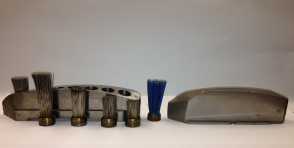From LOGA News, 25 March 2013
LAST WEEK BROUGHT a heartening breakthrough in the war over fracking: A handful of major green groups and big drillers agreed on environmental standards.
We’d forgive you for raising a skeptical eyebrow. Some in the industry have been claiming that fracking — which involves pumping fluid underground to extract natural gas from rock formations — needs no more rules. Some environmentalists, meanwhile, have been ringing the alarm so loudly that the practice seems too dangerous even to contemplate.
But the right path was never to let drillers continue without more oversight, nor was it to ban fracking. America’s natural gas boom is far too important an opportunity — economic and environmental — to ignore. But sound regulations are needed to ensure that it is not an ecological disaster. These new rules are a large step toward striking the right balance, and everyone involved deserves credit.
The Environmental Defense Fund, the Clean Air Task Force and some other green advocates joined with Chevron, Shell and other energy companies to create the Center for Sustainable Shale Development, an independent standard-setter that will certify when companies comply with its rules. The rule-writing process is ongoing, but the center’s initial offering is impressive, outpacing the government’s regulatory efforts and addressing many of the major environmental concerns.
The standards demand that drillers recycle as much fluid as possible and not discharge what’s left into waterways. Drillers would have to buttress their wells with casing and cement. They would have to disclose all the chemicals in the drilling fluid they use. The engines that operate rigs and transport material would have to meet high emissions standards. One critical rule would oblige firms to study the local environment before drilling and then strictly monitor it, including ground and surface water, after. This would discourage risk-taking and provide valuable data to help move the debate from emotion to evidence.
Perhaps most important are the center’s rules to prevent methane from escaping into the air during frack jobs. A big attraction of natural gas — which is mostly methane — is that it burns much cleaner than coal, producing about half the globe-warming carbon dioxide. But unburned methane is a much more potent greenhouse gas than carbon dioxide, so if some of it escapes from wells during extraction, that dulls the fuel’s environmental benefits. The new rules would have companies collect and sell all the methane that comes out of wells. They would also have to check the seals on their equipment regularly.
More rules are on the way. The center can’t require companies to comply with them. It can only audit those that voluntarily sign up. But there is plenty of value in that. The industry can hardly now claim that the rules are too onerous. Any small-town mayor or rural landowner thinking of allowing fracking can insist that companies be certified. State and federal policymakers, meanwhile, can look to the center’s standards as a guide as they write their own rules. That includes politicians in New York and Maryland who are still on the fence about whether and how fracking can be regulated effectively.
The center provides a model for environmental groups, too. They advance their cause much further when they accept that the country is fracking and push for sound regulation, instead of unrealistically insisting that all that natural gas stay in the ground.
